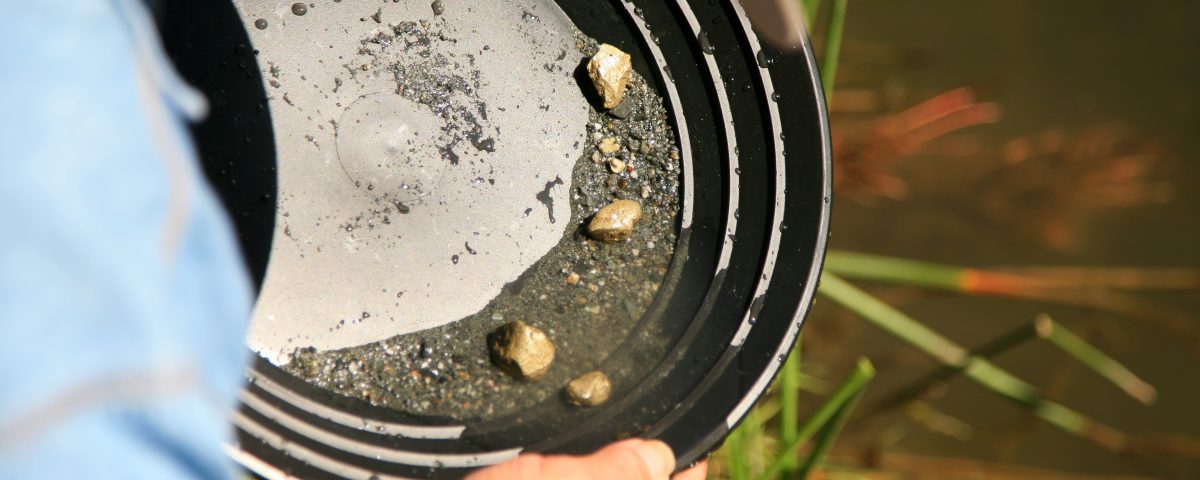Students Strike Gold: Meet Oliverian’s Geology Research Group
Students Strike Gold: Meet Oliverian’s Geology Research Group








Oliverian’s one-year-old Geology Research Group is small but mighty, boasting promising research, exciting discoveries, and a recent $2,500 grant from the Capital Mineral Club.
One of the best things about Oli’s low student-to-faculty ratio and close-knit campus family? It’s not unusual for an idea mentioned in passing to snowball into a new course offering or a dynamic extracurricular activity. That’s the idea behind Electives Week, which allows teachers and students to dive deep into topics that they normally wouldn’t be able to explore.
This campus-wide interest in exploration is also what helped launch Oli’s Geology Research Group. The group — which is just one year old — is comprised of two motivated students, Jacob Genga and Charles Handler, and led by science teacher and Dean of Studies Dr. Peter Tice. The program just received a $2,500 grant from the Capital Mineral Club of Concord, NH, ensuring its continued growth for years to come.
Bringing an Idea to Life
While the Geology Research Group didn’t officially begin until the Autumn of 2017, its existence can be traced back to the 2014-2015 school year. In August 2014, the College of William and Mary donated a set of X-ray diffraction reference texts to Oliverian. Though no one knew it at the time, those texts would later form the foundation of the Geology Research Group.
A few years down the line, the goals and principles of the geology program itself came to life during a conversation between Dr. Tice, Mark Jacobson, and Al Falster at the Rochester Mineralogical Symposium. The enthusiasm, ideas, and advice that each of them contributed to that conversation helped fuel the Geology Research Group, providing the momentum it needed to officially launch at the beginning of the 2017-2018 school year.
Jonathan Pines, who’s now an Oli alumnus, enrolled in the program in its inaugural year. With the guidance and assistance of Dr. Tice, he completed a research project titled “REE and Ti/Zr Mineralization in Garnet Schist from the Carrabassett Formation, Rumney, New Hampshire.” He presented his research at the 2018 Rochester Mineralogical Symposium — the first time that Oliverian contributed research to the Symposium! — and was awarded the prize for best student speaker.
The group’s current members, Jacob and Charles, got their first taste of geology hearing about Jonathan’s experiences. In fact, Jacob was able to attend the Symposium last year, and drew inspiration from the people he met and lectures he heard there. “There were so many people who were discussing and lecturing about so many aspects of geology,” Jacob explains. “And that made me realize that I wanted to do something similar to what Jonathan did last year.”
Taking a Deep Dive into Geology
This year, Jacob and Charles have both been able to identify and explore their own geological interests, performing original, hands-on research that they aim to present at the 2019 Rochester Mineralogical Symposium. Jacob, who’s had previous experience panning for gold and studying other fine metals, has chosen to study gold particles. He’s even found a small piece of gold in New Hampshire’s Wild Ammonoosuc River, which is known as a hotspot for gold prospecting.



Jacob’s gold particle.
Finding the piece of gold wasn’t easy: “I examined the geometry of the river, like the bends and pockets, to see where gold might fall,” he says. Once he’d determined which areas were most likely to contain the precious metal, he dug through the river sediment and eventually struck gold. While he explains that his piece of gold is too small to be “economically significant, even the smallest pieces of gold offer a world of potential analysis.”
Charles, on the other hand, didn’t join the Geology Research Group with a particular area of interest in mind. “I just went along with Jacob and Dr. Tice, and soon I found myself becoming interested in the magnetic sediment we’d pan out, so Dr. Tice encouraged me to look into it further,” he explains. Because he wanted to focus on the local region, his research project explores changes in the proportions of magnetic minerals at different points along rivers in the White Mountains of New Hampshire.
Both students appreciate that the Geology Research Group offers a hands-on learning experience that might not be possible in a traditional classroom setting. As Dr. Tice explains, “The guys are learning about the cool parts of science, but they’re also learning about the tedious parts, like sample prep and picking through everything you’ve gathered, which is really valuable.” Despite the more “tedious parts” of the scientific method, Charles says that “We learn a lot more and have a lot more fun in this class than in a regular classroom.”
